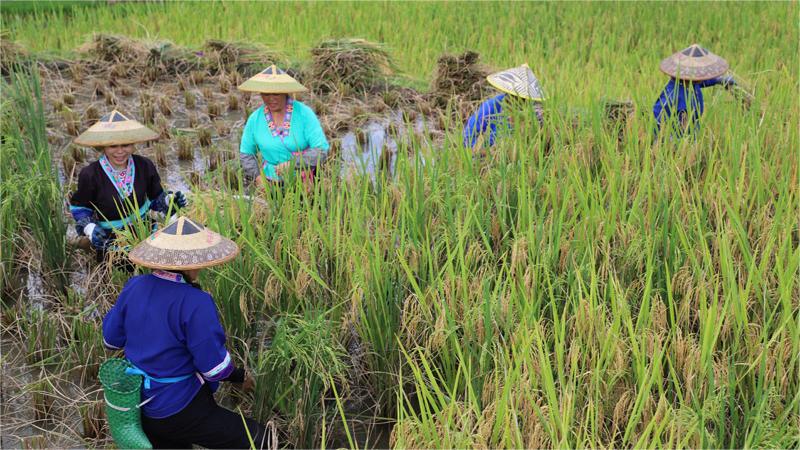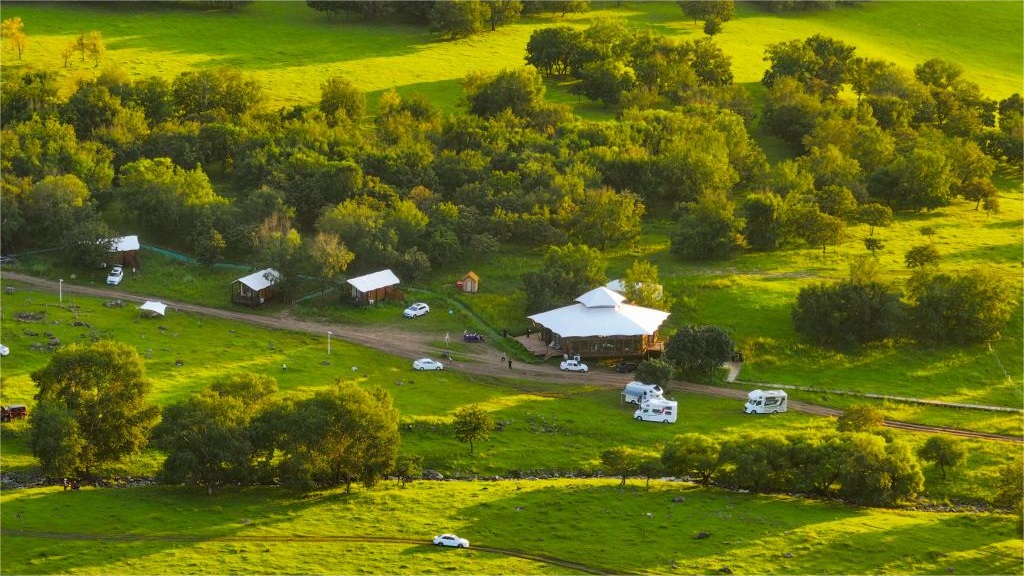From weeds to wonder: Wormwood bridges continents in fight against malaria
NANNING, Aug. 30 (Xinhua) -- Despite the sweltering summer heat, 62-year-old Long Changyang from Hongri Village in Rong'an County, south China's Guangxi Zhuang Autonomous Region, is busy harvesting sweet wormwood.
Once dried, the plant is processed to extract artemisinin, which is then made into medicine and shipped to Africa to help local communities fight malaria.
Located in a remote, mountainous area experiencing severe rocky desertification, Rong'an County covers largely barren land that makes traditional farming difficult. However, its harsh conditions are ideal for growing sweet wormwood, which thrives in arid environments and can withstand drought.
In the past, the plant was seen as a symbol of desolation. "The plant grew everywhere -- around our houses and in the fields. We treated it like a weed, pulling it out and only occasionally boiling water with it for bathing and disinfection," Long remembers.
Ancient Chinese medical books document the use of sweet wormwood to treat the chills and fever associated with malaria. This inspired Chinese scientist Tu Youyou and her team, and they discovered artemisinin in 1972, bringing hope to millions of people with malaria worldwide.
Since the 1990s, artemisinin-based combination therapies (ACTs) have been recommended by the World Health Organization (WHO) as the preferred treatment for malaria and have been widely used in malaria-endemic areas around the world.
Artemisinin producers visited the region to purchase sweet wormwood and offered guidance to locals on how to cultivate it, and the plants grown in Rong'an County have since gained significant economic value.
"The plant grows quickly, even in poor soil. Just look at what was planted in April -- now they are as tall as a man," Zhu Taiguang, head of a traditional Chinese medicine planting cooperative, said while standing in a wormwood field.
A single mu (about 0.07 hectares) can yield a maximum of nearly 300 kilograms of wormwood and a minimum of over 100 kilograms, Long said, adding that a guaranteed purchase price from buyers means each mu fetches more than 1,000 yuan (about 141 U.S. dollars).
Guangxi Xiancaotang Pharmaceutical Co, Ltd, which accounts for a third of the country's total artemisinin production, is a major buyer of the plants grown by Rong'an locals.
"Based on dosage estimates, our raw artemisinin materials are used in a quarter of the antimalarial drugs supplied to 400 million people every year," said Kong Xueping, deputy general manager of Xiancaotang.
Malaria was once a major infectious disease in China, affecting millions of people. But since the 1970s, the discovery and use of artemisinin have greatly improved the country's control and cure rates of the disease, and eventually led to its complete eradication 50 years later.
This success positions artemisinin as an essential tool in the global fight against malaria.
In addition to its provision of effective drugs, China has also undertaken malaria control cooperation with various African countries, sending medical teams to many malaria-endemic regions.
The malaria mortality rate in the African region decreased significantly, from 143 deaths to 56 per 100,000 population at risk from 2000 to 2022, according to the WHO's world malaria report 2023.
The widespread use of artemisinin-based treatments has been crucial.
"Some severe malaria patients are in comas and unable to take oral drugs. Additionally, artemisinin is not easily dissolved in water, meaning it is difficult to make it into an injection," said Peng Xiaodan, president of Guilin Pharmaceutical Co., Ltd, a subsidiary of Fosun Pharma.
After thousands of experiments, Guilin Pharmaceutical successfully developed injectable artesunate in the 1980s and has since developed a second generation of the drug to fight malaria.
By 2023, the company's injectable artesunate had been used in more than 68 million severe cases of malaria worldwide, and its oral malaria-prevention drug had been supplied to approximately 258 million children in Africa, according to Peng.
Photos
Related Stories
- China becomes popular destination for African students
- Gabonese anchor promotes Chinese culture to Africa through her voice
- Combining quality and innovation, China helps fuel Africa's industrialization
- China-Africa space cooperation benefits people across continent
- China stretches run as Africa's largest trading partner to 15 consecutive years
Copyright © 2024 People's Daily Online. All Rights Reserved.









